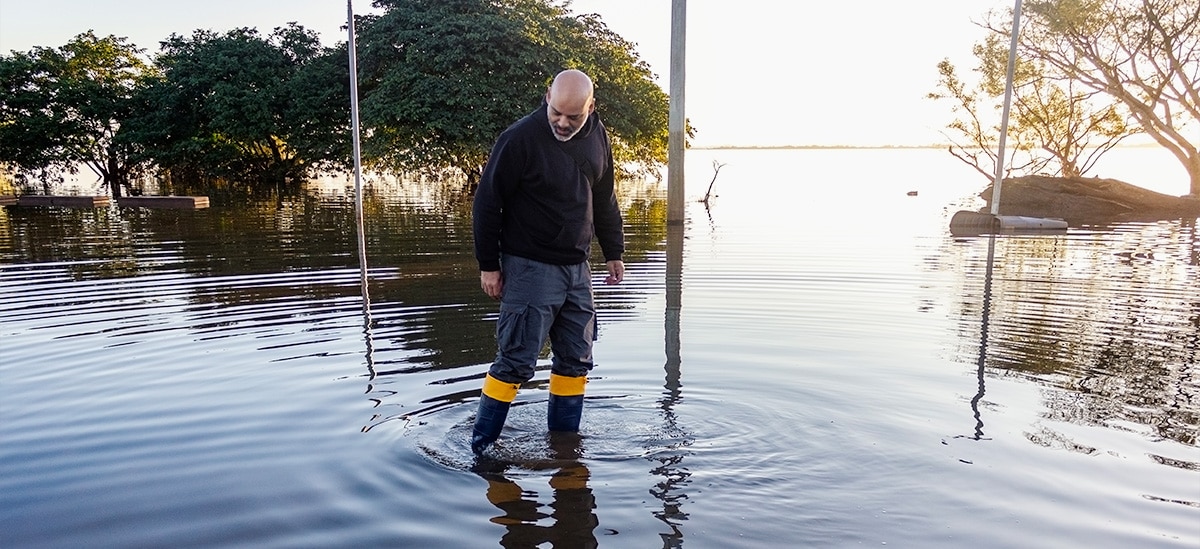
Whether it’s wildfires, floods or even winter weather, there seems to be no shortage of events threatening the safety of people and property. And while there’s little you can do to prevent nature’s extremes, you can put yourself in the best position to shield your family from significant financial loss.
In the United States there were more than 27 weather or climate-related events with losses exceeding $1 billion each in 2024, according to the National Oceanic and Atmospheric Administration. Over the last five years, there have been 115 such events at a combined cost of more than $746 billion. The threat from natural disasters underscores the importance of regular attention to property and casualty insurance across the country.
“High-impact weather events have been increasing over the last few decades and they’re a threat for people in all parts of the country,” said Cori Matthews, National Insurance Strategist for PNC Private Bank Hawthorn. “Adequate insurance coverage is an imperative in this environment and should be a key component to a financial plan.”
But establishing coverage isn’t just a one-time project. Matthews says property and casualty insurance should be reviewed annually to ensure you’re accounting for any changes to your risk profile. A few specific considerations include:
Choosing Replacement Cost vs Cash Value
In the event your home or property is damaged in an accident or natural disaster, it would be insured based either on its replacement value — the total cost to replace it regardless of depreciation; or based on its actual cash value – the replacement cost minus depreciation at the time of loss. For most homeowner’s insurance policies, the default is to replace your home’s structure (dwelling) at replacement cost, but the belongings at cash value. It’s generally possible to upgrade coverage to also insure belongings at replacement value, but that will most likely come with a higher policy premium.
Additionally, you may want to consider additional coverage for your dwelling, which includes the structure, surfaces, and certain appliances in your home. Although in most policies they will be insured at replacement value by default, additional coverage can help provide a buffer for construction or material costs that may rise above your home’s insured value.
“Replacement value vs. cash value is one of the most important considerations when evaluating your existing insurance coverage, especially if you have a higher value home or belongings,” Matthews said. “Paying a little more for replacement value coverage can help provide peace of mind that you’ll be taken care of in the event you experience a loss.”
Accounting for Loss of Use
If you do experience a loss and are unable to use your home for a period of time, you’ll need to make sure you’re adequately covered for alternate living arrangements. Loss of use coverage — which covers temporary housing, some grocery, and other living expenses — is generally a standard component of your homeowner’s insurance policy. Depending on your lifestyle needs, the cost of living in your area, or the length of time it takes for you to get back in your home, your existing coverage may not be enough to cover your needs. In the event of natural disasters, where demand for alternate housing can be high and inventory low, alternate living arrangements can be priced above what would be covered through standard loss of use coverage. It’s important to examine what your loss of use covers, its limitations, and whether you might need supplemental coverage for an additional premium.
Protect Your Valuables
If you have high-value items or collectibles among your belongings – anything from jewelry or fine wine to art or even rare comic books – they likely won’t be covered to their full value strictly by your homeowner’s policy. You may be able to add certain items as a rider to your homeowner’s policy, or you can consider additional collectibles insurance, which protects against loss or theft. Collectibles insurance may require a detailed inventory or appraisal of your collection to determine its replacement value.
Consider Potential Litigation
Nobody wants to think about the prospect of litigation, but it’s an important consideration when determining your insurance needs. How would you protect yourself financially if you were sued? Has a recent liquidity event brought public attention to your wealth? They’re unfortunate, but important questions to consider.
If you own watercraft, ATVs, a vacation home or other property that others may use, it’s important to consider the injury risk and properly insure against it. In addition to people who use a vacation property or recreational equipment, any domestic employees that work at or with those things can create risk that needs to be accounted for in your insurance plan.
“Even though it may seem that it’s unlikely to happen to you, wealth can make people a target for lawsuits,” Matthews said. “Whether or not it’s ever a challenge you face, examining potential vulnerabilities is good practice toward securing your financial future.”
Ensuring Liability Coverage is Up to Date
Part of examining vulnerabilities is ensuring that you’re accurately assessing liability risks on an annual basis. Much of your liability coverage will fall under a homeowner’s or automobile insurance policy, but when your net worth exceeds the combined coverage limits of your home and auto insurance, you’ll likely need a supplemental insurance option, such as an umbrella policy or other specialized policy to ensure you’re covered in case of an accident. It’s also important to make sure you’re accounting for any year-to-year changes in assets or home improvement projects that could add additional liability to your living space.
“Thinking through the ‘what if’s’ of natural disasters and accidents is unfortunately, not something you can afford to ignore,” Matthews said. “By devoting a little time to an annual review of your insurance setup, you can put yourself in the best position to thrive through whatever life has in store.”



